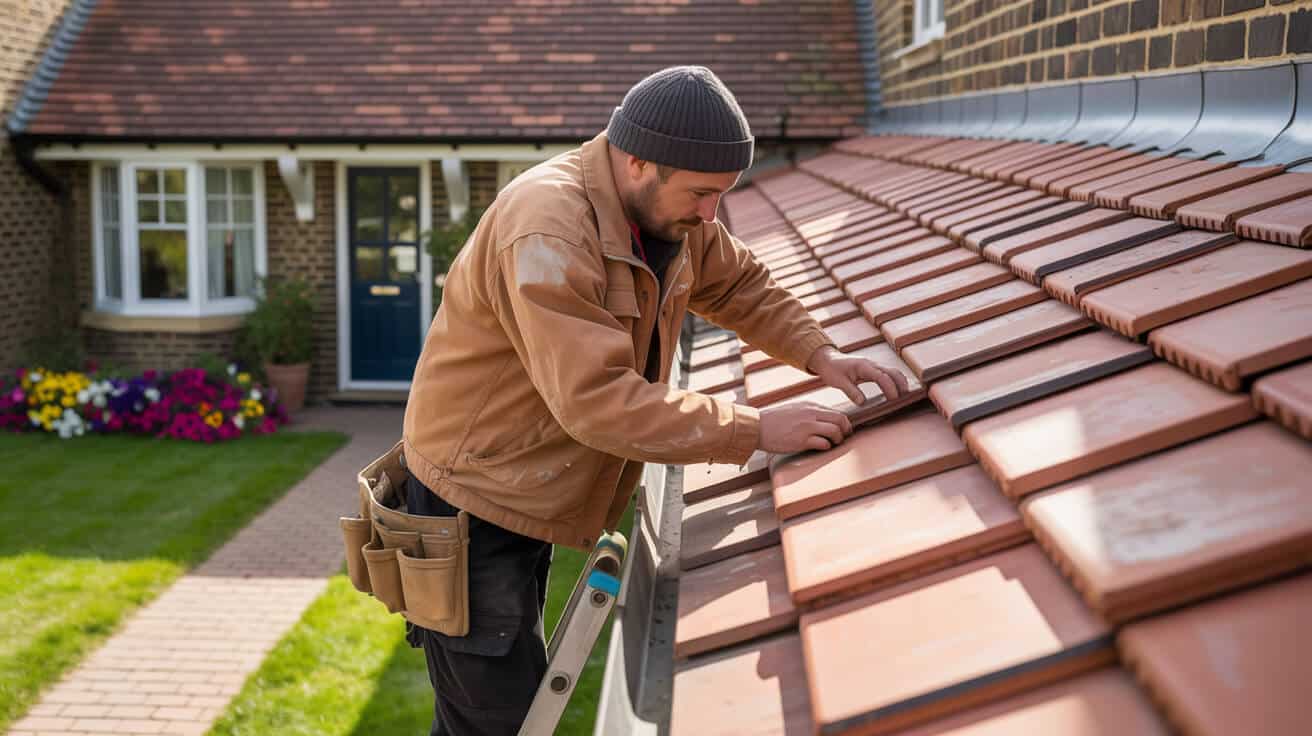 Roof And Gutter Inspections Why Biannual Checks Are Essential
Roof And Gutter Inspections Why Biannual Checks Are Essential
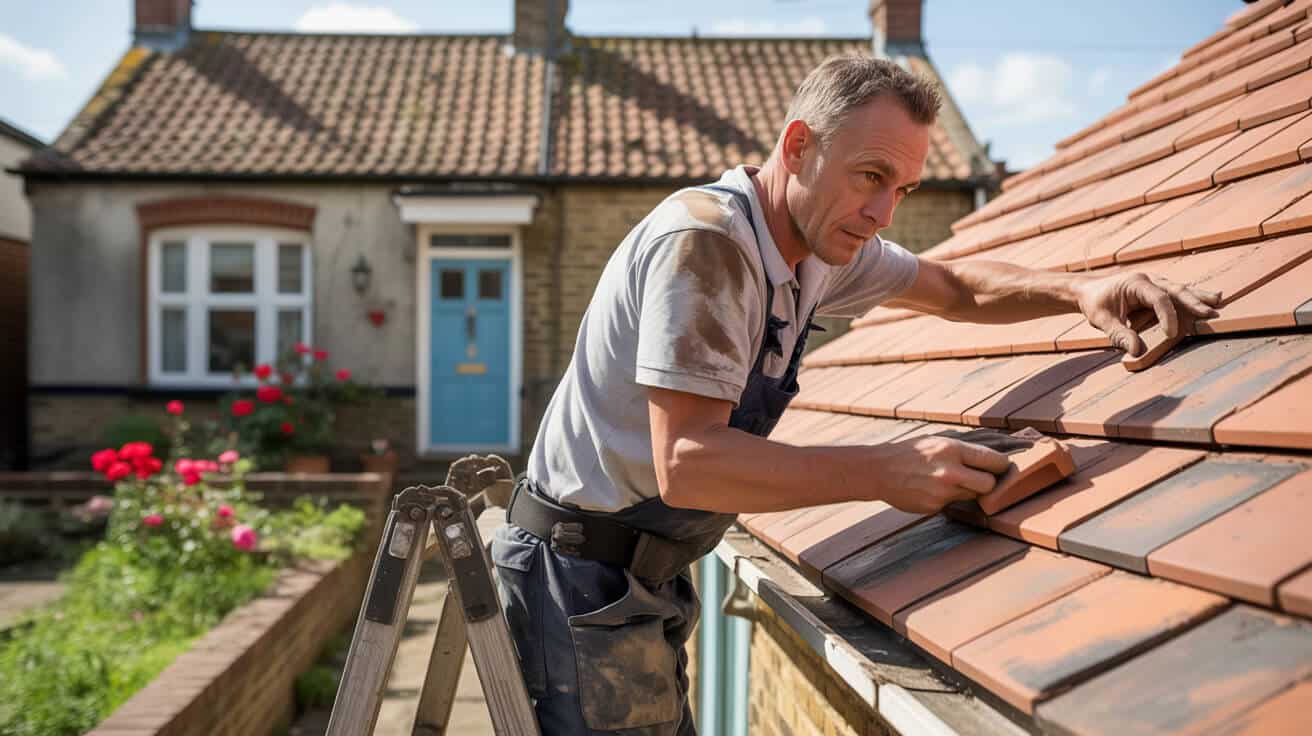
Why Are Biannual Roof and Gutter Inspections Non-Negotiable for Property Owners?
Hidden risks in your property don’t announce themselves until the cost has already landed. A patch of damp above the ceiling, a gutter quietly blocked out of sight, or rain sneaking behind worn flashing—these issues lurk undetected and strike hardest when you least expect it. The real expense of skipping inspections always lands in lost time, emergency repairs, and legal complaints nobody wants on their record. In today’s environment, UK property owners can’t treat biannual roof and gutter maintenance as a “nice-to-have.” It’s the backbone of asset protection and long-term reputation.
Most expensive problems never appear suddenly—they grow slowly until urgent is your only option.
Here’s why biannual checks are now standard for every property owner or managing agent:
- Unchecked risk increases with time: Insurers, surveyors, and UK codes are clear—miss your inspections, and each oversight becomes a future emergency. Small leaks, unnoticed blockages or worn seals can produce major repair bills and compliance headaches.
- Legal obligations are concrete: Section 11 of the Landlord and Tenant Act 1985 enforces a “keep in repair” principle. The law expects you to maintain structural elements—including roofs and gutters—continually, not just after tenants complain (NRLA).
- Prevention beats even the fastest reaction: A professional inspection makes the difference between a scheduled minor repair and a frantic out-of-hours call. A small outlay for upkeep is always more manageable than the chaos of missed rent, flooded rooms, or contested deposits.
The modern property owner’s advantage comes from consistency and proof, not from hoping for good weather or lenient audits. Treating inspections as a non-negotiable part of your calendar doesn’t add another burden—it subtracts future disasters.
What Actually Happens During a Thorough Roof and Gutter Inspection?

A real inspection isn’t a guess or a quick look with a torch. It’s an organised process with specific steps and documentation—every technician worth their uniform follows these fundamentals. Here’s what happens when you book a proper roof and gutter check:
- Safe access, always: IPAF and PASMA-certified equipment ensures all work at height is safe and fully insured. Rushing access or skimping on PPE is a shortcut to bigger problems and legal liability ([Met Office](https://www.metoffice.gov.uk/weather/warnings-and-advice/seasonal-advice/your-home/gutter-maintenance?utm_source=openai)).
- Systematic survey: Every visible part—tiles, slates, ridge lines, flashings, valleys, gutters, and chimney bases—is checked for anything that’s loose, eroding, blocked, or hosting plant growth. Weak points like lead flashings get pressed by hand and eyeballed for softening or detachment.
- Drainage and flow test: Gutters, outlets, and downpipes are not just cleared but tested for proper flow with on-site water checks. This nips invisible blockages or “slow” leaks before they manifest.
- Joinery and fixings check: Soffits, fascias, and external woodwork take a pounding from the elements. Rot, looseness, or signs of animal/insect ingress are flagged and prioritised.
- Internal inspection: The loft or ceiling is inspected for early warning signals like water stains, sagging insulation, black spot mould, or abnormal condensation levels—issues seldom spotted from outside.
- Evidence-based reporting: Dated, location-tagged photographs and digital logs create an audit trail that supports insurance claims and proves compliance ([bamapa.co.uk](https://www.bamapa.co.uk/what-are-the-risks-of-ignoring-regular-gutter-mainte)).
What you can’t see is almost always the problem—thorough checks are designed to turn hidden risk into manageable action.
Effective inspections leave nothing to chance. Surface-level “tick box” checks let weak points escape until disaster strikes. The details count: a loose tile, a swelling joint, or a localised patch of rot isn’t just a minor flaw—it’s tomorrow’s urgent callout.
Why Are Spring and Autumn the Critical Windows?
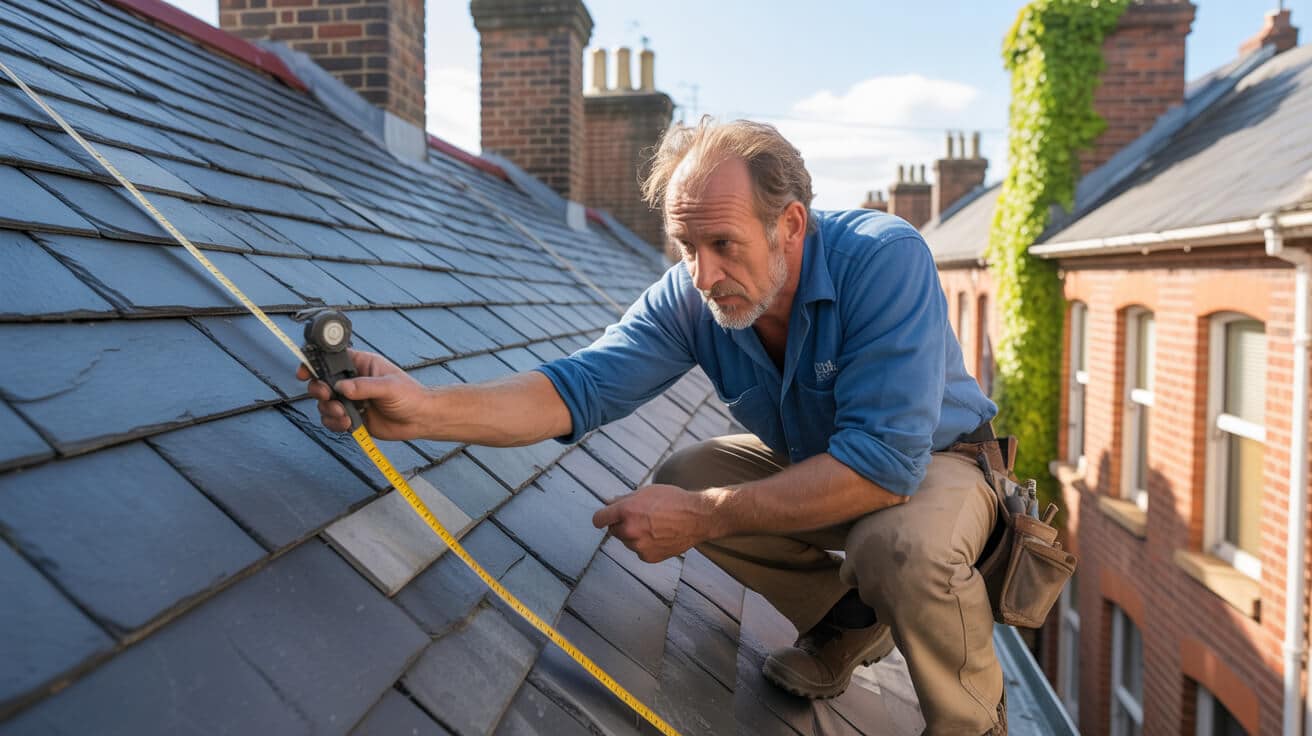
You won’t find any folklore or vague tradition behind the “twice-a-year” schedule. The timing has everything to do with predictably tough UK seasons—and with preventing quiet escalation into urgency.
Why these two seasons?
- Spring checks after winter stress: Freeze-thaw cycles split tiles, heave up flashing, and crack fixings. The first warm days reveal problems left by winter ice and storm gusts. If you miss a spring survey, deteriorations fester unseen through the summer storms.
- Autumn checks pre-empt winter traps: Deciduous leaves, moss, and organic debris choke gutter runs and downpipes, setting the stage for winter’s worst. Clogged gutters let water back up, saturate insulation, or find its way into the fabric of your building during freezes.
Most leaks are months in the making—autumn’s first leaf is often the starting line, not the finish.
Insurers and building authorities recommend these seasons because detected faults are freshest then—simpler and cheaper to sort. Letting inspections roll past these milestones increases the risk (and eventual cost) of hidden decay or winter emergencies.
For portfolio landlords and letting agents, these dates sync with tenancy transitions and routine contract reviews. The result is fewer surprises for everyone—the owner, the tenant, and the insurer.
What Consequences Follow If You Delay Roof and Gutter Maintenance?
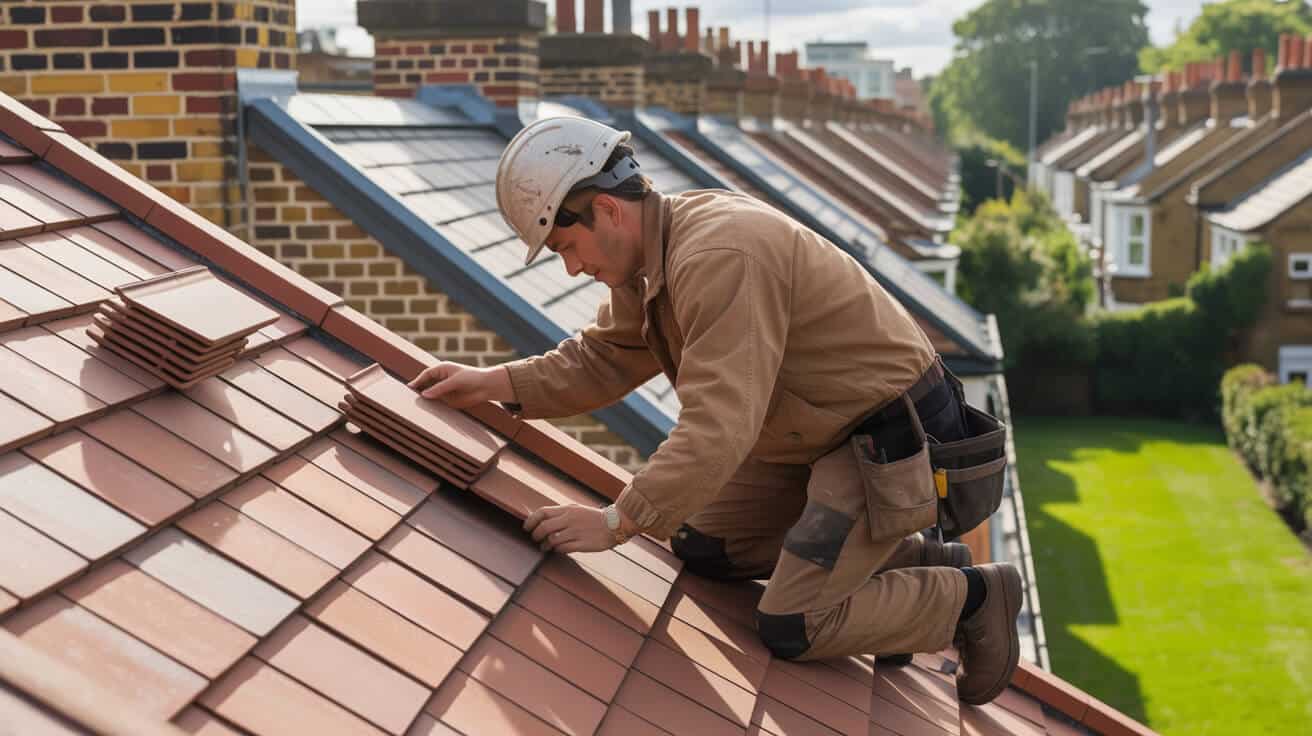
Let delay creep in, and you’ll watch minor nuisances morph into reputation-destroying disasters. What starts with a block or a drip moves rapidly to structural damage and fines:
- Overflow sends water behind walls, into ceiling voids, and through insulation.
- Rotted joists, collapsed ceilings, and unhealthy, mould-infested voids become not just plausible but inevitable.
- Small fractures in tilework and flashing silently escalate; the time-to-failure shrinks with every missed check.
By the time a ceiling stain appears, the real repair has been waiting for your attention for months.
The chain reaction doesn’t end with damage. Damp entering electrical zones means failed appliances, tripped circuits, and landlord liability:
- Unsafe living conditions invite official action and open legal exposure.:
- Insurance policies often exclude claims where maintenance was neglected or records are absent.:
- NHS admissions for damp and mould-related illness spike every winter—data shows homes with inspection records fare much better.:
Legal compliance is not a grey area here. UK law is clear: delays or oversights in building upkeep open the door to rent withholding, compulsory repairs, and mismanagement claims (Wikipedia – Landlord and Tenant Act 1985). Documentation gaps or late calls for help often result in denied insurance claims, even if you fix things after the fact (bamapa.co.uk).
“Wait and hope” is a losing bet. Restoration after the event will always be slower, costlier, and filled with stress that planned maintenance avoids.
What Are the Legal Requirements and Responsibilities for Landlords?

You can’t plead ignorance or “I was busy” if things go wrong. UK statutes demand active, proactive maintenance of every external asset. If you own or manage property, here’s what you’re on the hook for:
- Active repair duty: Section 11 of the Landlord and Tenant Act 1985 mandates ongoing maintenance, not just response to tenant complaints. If you skip checks, you are legally exposed to fines, compensation claims, and even direct council repairs ([NRLA](https://www.nrla.org.uk/news/rentguard-a-guide-to-periodic-inspections?utm_source=openai)).
- Evidenced action, not promises: Regulators and insurers demand proof—timed logs, clear photographs, and professional service records. This substantiates your case in disputes or insurance claims.
- Standard of frequency: Minimum expectation across the UK is biannual checks. High-traffic properties or those in coastal/storm-prone areas may need quarterly coverage.
Digital service platforms have made compliance easier. Simple reminders, snapshot photo reports, and cloud-stored invoices keep your documents ready for any inspector or claims handler.
Modern compliance is about “show and tell”—late paperwork and vague recall are treated as negligence, even if you act quickly at a later date.
Can Biannual Inspections Actually Save You Money?

Preventive inspections don’t just cap your risk—they directly boost long-term profit and stability.
- Properties with tracked, biannual inspection logs see roofing and gutter elements lasting up to 20% longer than average.
- Owners typically save £4,000 to £10,000 over a decade simply by avoiding large-scale urgent repairs, insurance claim denials, or disputed compliance fines.
- Minor repairs—resetting a loose tile, resealing flashing, clearing an outlet—generally come in at a fraction of emergency call-out costs, which regularly exceed four figures if left unchecked ([Tekton Roofing](https://www.tektonroofingandbuilding.co.uk/the-importance-of-regular-roof-maintenance-and-inspections?utm_source=openai)).
The price gap between planned and emergency fixes is always a multiple—owners who invest in checks rarely face budget blowouts.
Routine upkeep delivers bigger wins:
- Insurers reduce premiums: for properties with current, detailed inspection logs.
- Buyers and tenants pay more for evidence of care: —faster deals, fewer disputes, stronger reputations.
- Fewer disruptions, happier occupants: Reactive repairs grind life to a halt. Planned checks keep problems off calendars and out of rental cycles.
Letting agents routinely report around a 40% drop in unplanned emergencies when biannual check routines are adopted as policy (NRLA).
Is There Tangible Evidence That Early Repairs Outperform “Wait and See”?
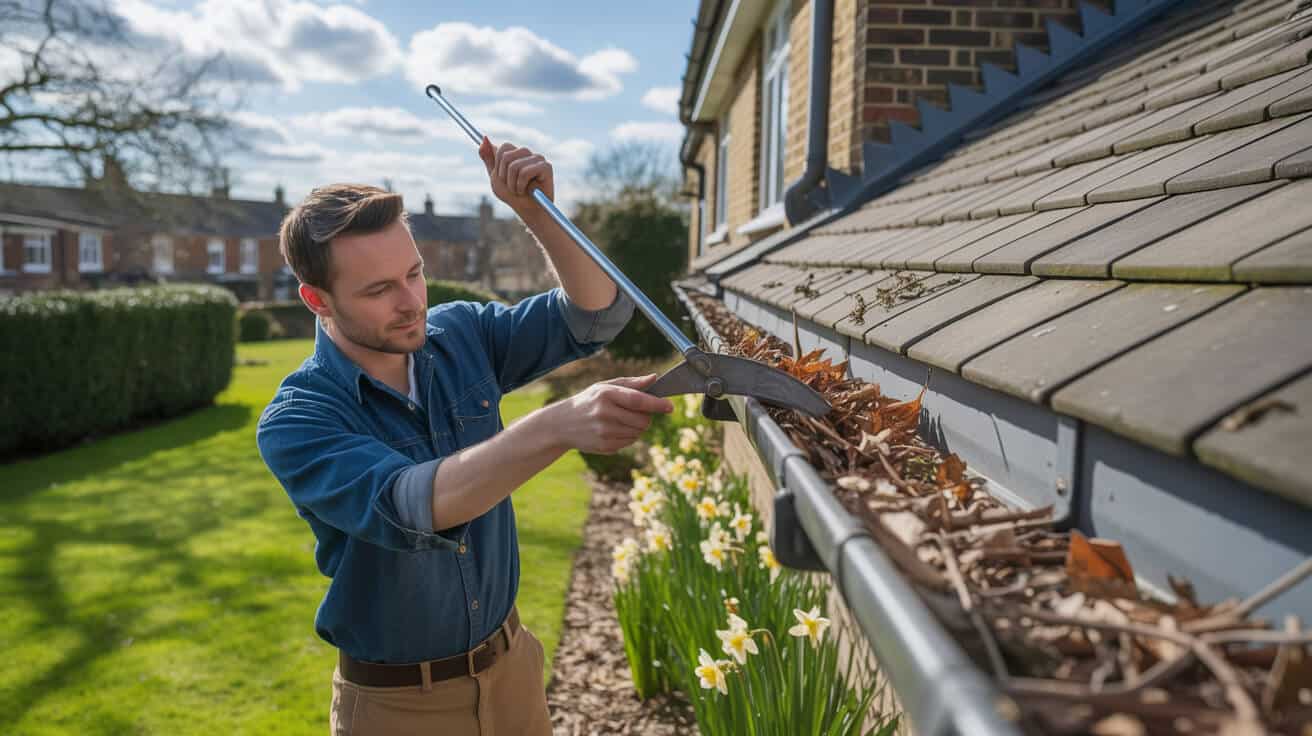
Property maintenance is not a lottery; statistics and real client outcomes give the game away:
- Scheduled, early repairs—like realigning a slipped tile or unclogging gutters—cost £70–£160 per visit.
- The same faults left a season or two become full-blown emergencies—replacing ceilings, woodwork, insulation, and sometimes electrics, with bills leaping into four figures ([USABestRoofing](https://www.usabestroofing.com/post/how-poor-roof-maintenance-can-lead-to-structural-damage?utm_source=openai)).
- With clear inspection records, disputes are rare and resolved quickly. Insurers release funds on documented claims; tenancy deposit schemes rule in favour of the well-prepared.
You get more than savings:
- Budget and timing control: You decide when and how the work is done, rather than reacting to disasters.
- Dispute-proof documentation: Photos and signed checklists cut through “he said/she said” wrangles for years to come.
- Predictable costs: No surprise bills, no last-minute hunts for a contractor, no forced rental voids.
Smart landlords lean into tech—calendar automation and digital service logs mean even large portfolios stay on schedule and audit-ready (Kennedy Bros).
The best-documented properties are the least likely to need emergency repairs, and their owners sleep better for it.
What Should a Roof and Gutter Inspection Checklist Ensure?
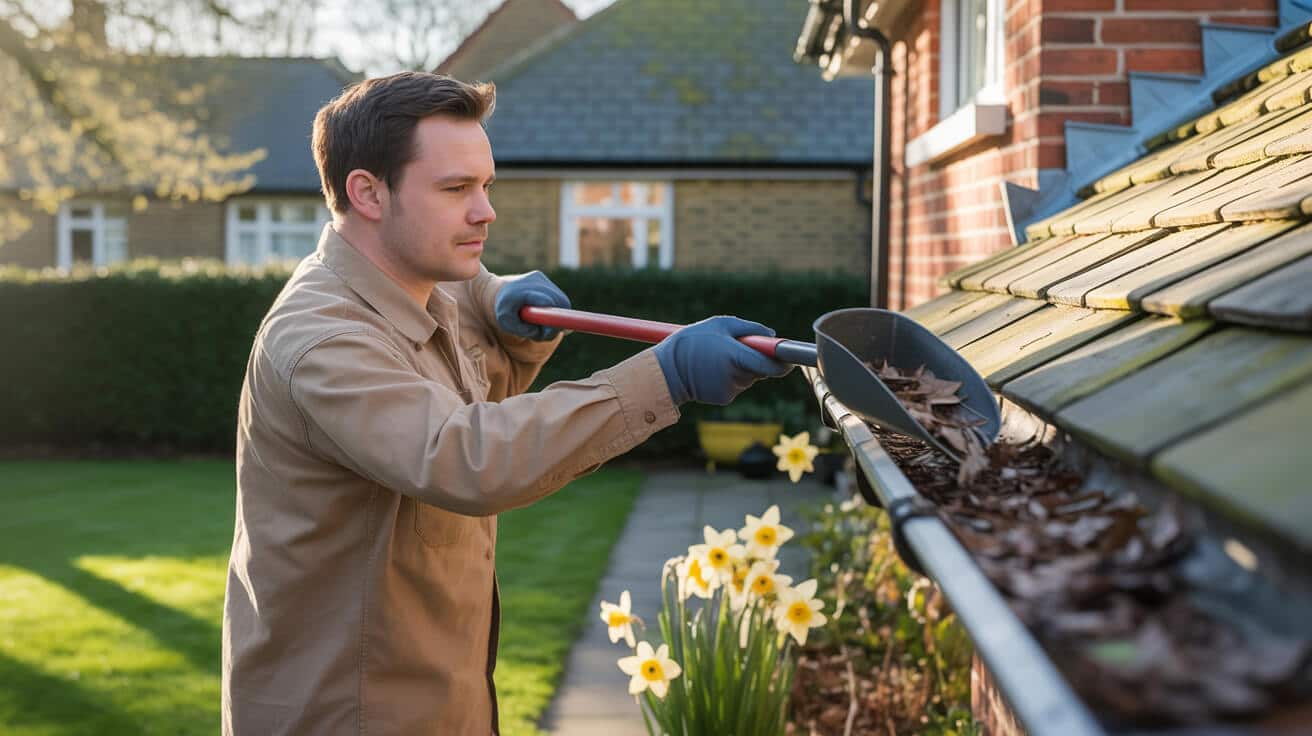
If your provider can’t transparently show their checklist, you’re at immediate risk. Here’s what separates a tick-box exercise from thorough, compliant inspection:
- Access procedures: Only IPAF and PASMA-certified techs should work above ground-floor height. Anything else and you’re risking safety and invalidating insurance.
- Physical roof check: Every roof element—tiles, ridges, gables, flashings—gets visually and physically tested for stability, moisture, and plant growth.
- Gutter and drainage: Clear all runs, test every outlet and joint with real water, and check fall to drains. Any leaks or blockages are flagged for next-step action.
- Internal spaces: Loft and attic voids are checked for hidden signs—damp, staining, insulation collapse. Most missed problems start here.
- Evidence and reporting: Date-stamped photos and location logs are compiled into a digital record, with priorities and follow-ups assigned ([Tekton Roofing](https://www.tektonroofingandbuilding.co.uk/the-importance-of-regular-roof-maintenance-and-inspections?utm_source=openai)).
Comprehensive means step-by-step records, photos, and specifics—not vague reassurance. That’s your defence when it matters.
Professional service providers such as All Services 4U are explicit: every technician is City & Guilds qualified, DBS-cleared, and using certified access equipment. Their checklists are open and digital records are built for easy audit or claim submission—if your reports are handwritten or patchy, you should question the value before crisis strikes.
Book Your Inspection with All Services 4U—Stay in Command
Biannual roof and gutter checks separate accidental landlords from professionals. Ignore them and you’re scheduling future headaches—compliance action, mounting bills, unhappy tenants, and insurance delays. The properties that win long-term are those with proactive routines and transparent records.
- Book with All Services 4U.: Our City & Guilds-qualified, PASMA/IPAF-registered, and DBS-cleared team brings digital-first documentation to every job—compliant, detailed, and ready for any audit or claim.
- Instant access to checklists and digital logs.: No last-minute paperwork scrambles—everything is cloud-stored, downloadable, and accepted by insurers or authorities.
- Portfolio? Group quotes and batch inspections available.: Ideal for landlords and letting agents needing turn-key compliance without drama or disruption.
- Every inspection is all-in: We don’t cut corners, don’t rush, and don’t leave you guessing—just clear, calm, and complete service that makes your property safer and your life easier.
Owners and agents who invest in regular checks spend less, sleep better, and build reputations tenants and insurers trust.
Book your biannual roof and gutter inspection with All Services 4U—step up your compliance, protect your asset value, and eliminate future regrets.
Frequently Asked Questions
What distinguishes biannual roof and gutter inspections as an essential—not optional—risk control for owners and managers?
Biannual inspections are the tightest line of defence against escalating damage, legal disputes, and sudden financial hits in property management. They aren’t just “extra diligence”—they’re the single change that separates avoidable emergencies from quietly compounding value. Owners and site managers who build this cadence into their asset plans shift from firefighting to future-proofing, moving risk from “unknown” to “monitored and insured.”
water ingress, moss growth, and frost-damaged tiles exploit every missed cycle. UK insurance now conditions many payouts on “evidence of periodic, professional maintenance”—without that log, rejected claims spike and premiums creep up year on year. Facilities running mixed-use sites, older structures, or investor portfolios face even more acute exposure: from tenant claims and deposit disputes to group policy uplifts. Modern maintenance means logging every check, at prescribed intervals, by certified fitters—because facilities value isn’t measured by what you avoid, but by the problems you see before they can hide.
“Most building headaches start with what isn’t measured or checked. The value of your property is guarded by what you prove, not what you promise.”
Which building types and teams anchor the highest returns from this routine?
- Private landlords and HMO operators: —Avoid Section 11 pitfalls and keep proof ready for tenant challenge or licence renewal.
- Location-based asset managers: —Diminish bad surprises across multiple rooftops, standardising annual repair budgets.
- Commercial and retail block owners: —Spot legal and lease risks tied to hidden gutter, parapet, or insulation failures.
- Portfolio investors: —Preempt insurance claims with system-wide logs, keeping underwriting friction at bay.
Regular twice-yearly checks go beyond passing surveys—they underline leadership, foresight, and operational excellence you can’t fake under audit.
How do certified professionals structure a modern inspection for evidence, action, and compliance—beyond what DIY can deliver?
A professional inspection is never a quick once-over; it’s an operationally planned process with compliance, safety, and the owner’s risk profile in focus. Certified technicians (IPAF, PASMA, City & Guilds) deploy detailed checklists and safe access platforms, giving you results mapped, logged, and ready for any inspector or insurer.
Each visit runs through a multi-point sequence: roofs are checked for membrane integrity, tile/flash/facia movement, pointing gaps, and early decay. All drainage points are hand-cleared, then tested for flow under simulated rainfall when safe. Eaves, soffits, and vents are probed for rot, ingress, pest traces, and ventilation blockages. Inside, lofts or roof voids are scanned for daylight leaks, sagging insulation, and telltale spotting. Engineers compile digital, photo-rich reports tagged by urgency (“immediate risk,” “monitor,” or “scheduled”). These are formatted for audit-ready archiving—exactly what group insurers now cite in their best-practice guidance and Section 11 oversight.
“Documentation is as important as the fix—what you log today is your shield tomorrow.”
What does this approach eliminate that ad-hoc checks always miss?
- Insurance-qualifying logs, NOT just a technician’s memory
- Scheduling consistency—ensuring trends are tracked, emerging faults surfaced before they escalate
- Safe access protocols only legal with proper certification—DIY ladder checks are unsupported for most building types
- Defect trend analysis—digitally compared across visits, not anecdotal observation
DIY checks can flag obvious stains, but the legal and financial defence is in the documented, system-wide sweep.
Which emerging weather patterns and insurance terms make annual checks dangerously outdated?
Faster, more erratic UK weather cycles and evolving insurance language now render annual checks a weak standard. With year-on-year increases in both rainfall and frequency of severe wind events (Met Office, 2024), single snapshots leave entire risk cycles uncovered. The post-2022 regulatory scene has tightened: many contracts now call out “seasonally appropriate” checks, and several major underwriters have introduced conditional excesses for missing mid-year records.
Regulatory focus isn’t just on intention but on logged action. Section 11 enforcement, NRLA, ARLA, and TrustMark guidance all recommend at least twice-yearly, credentialed site evidence. For high-traffic or multi-let properties, block managers now face digital log requirements to insulate against deposit disputes and local authority intervention. Most damage emerges between seasons—a blocked gutter in spring, a loose flashing after autumn storms—yet routine annual checks miss these by design, not by chance.
“The costliest repairs arrive in the shadows between scheduled checks. Insurance won’t cover what wasn’t clocked at the right time.”
How does segmented scheduling pay off?
- Reduces back-to-back tenant complaints and “rainy season” emergencies
- Provides continuous, seasonally balanced evidence—critical against policy exclusions
- Offers proof points for negotiation with both insurer (lower premiums) and stakeholder (prevention, not just response)
The era of annual-only inspection as “sufficient” is over—current risk and compliance demand an agile, documented rhythm.
Why do assets and balance sheets pay a high price for lapses in scheduled inspections?
Missing even one scheduled visit can silently compound damage for months—structural decay, fungal growth, and rot develop invisibly, then surface as major outlays, uninsurable events, or legal disputes. Remediation costs for water ingress multiply in relation to detection delay; by the time leaks hit occupant awareness, fixes climb from hundreds to several thousand pounds, with associated tenant compensation or rent reductions a growing risk.
Present-day insurance audits prioritise proof of “preventive, scheduled maintenance by certified trades.” Failing on this threshold flips cost burden entirely to the asset holder. Omitted or ad-hoc logs trigger premium surcharges, denied claims, and protracted disputes that drain both cash and culture. Recent cross-sector trade analysis indicates 80% of claim rejections in 2023–24 stemmed from a lack of periodic log, and major UK repair networks now record that half their major callouts trace directly to missed, not misdiagnosed, inspection slots.
“If you only notice the problem when a tenant does, you’re already paying triple—first in repairs, then in trust, then in lost time.”
Which costs surface most commonly from inspection gaps?
- Disrepair claims and housing-standards fines for landlords who skip logs
- Insurers invoking “preventable loss” and refusing water damage payouts
- Missed damp or decay accelerating to full redecoration or invasive works
- Reset insurance premiums for entire site portfolios after evidence gaps
Consistent, professional logbooks don’t just save outlier costs; they build predictability into every budget line you defend.
What quantifiable benefits—beyond immediate repair saving—come from prioritising professional, scheduled checks?
Biannual, professionally logged inspections turn maintenance into an ROI engine—not just a line cost. Portfolio-level UK data now demonstrates up to a 35% drop in yearly emergency repair spend, plus 10–12% insurance premium reductions for staged, photo-archived log submission. Letting agents and group policyholders also report a 41% decrease in deposit challenge rates after switching to twice-yearly professional records, with audit friction and stakeholder scrutiny dropping in parallel.
Repeated digital trail creation helps during property sales, refinancing, or compliance checks—a robust log vault is an asset negotiators, buyers, and lenders now expect, and insurers increasingly reward. Batch scheduling opens priority response tiers, price reductions, and cross-property plans, compounding value the larger your holdings get. Owners and REIT managers using structured check routines report both time savings and market premium on sale or letting—a tangible signal that routine investment builds resilience and trust for every future stakeholder.
“Frequency is the foundation of value—maintenance routine is the only shortcut in property that pays forward every time.”
Net positive impacts by the numbers:
- Lower litigation and disrepair dispute exposure (direct deposit evidence)
- Sharper asset valuations in refinancing/sale cycles
- Stronger position in insurance negotiations, lowering operating margins
- Access to batch service and aftercare features unavailable to one-off or single-tenant sites
Professional inspections multiply value across property and management lifecycles, not just year-on-year cash flow.
Which legal standards, frameworks, and insurance protocols define credible defence for today’s asset steward?
Protection in 2024 isn’t about intention, but execution: owners, managers, and agents require audit-traceable logs, certified trades, and real-time compliance evidence to meet evolving policy and statutory requirements. The Landlord & Tenant Act 1985 (Section 11) now underpins repair litigation, with documentation weighted equally to corrective action. Deposit protection schemes and group insurance policies reference regular, third-party logs—not owner memory—as the gold standard.
NRLA, ARLA, TrustMark, and leading insurers converge around professional evidence as best practice. Recent code changes include explicit cycles for guttering and external fabric (not just reactive care). Enforcement gaps, from unlogged checks to uncredentialed DIY, now escalate quickly to fines, rent repayment, or policy exclusion. Lenders, as well as buyers, increasingly request digital maintenance vaults as proof in due diligence and risk scoring—regulatory creep is turning compliance into an operational edge.
“Your compliance isn’t judged on what you intend, but on what you can show—on demand, to anyone who asks.”
What are the operational signals of defensible compliance?
- Regular, third-party inspections using PASMA/IPAF or City & Guilds-certified teams
- Timestamped, image-backed reports for each scheduled visit—archived for instant search or agent transfer
- Up-to-date insurance with coverage for both public and employer liability
- Demonstrable Section 11 and deposit-scheme alignment to avoid default penalties
Smart scheduling, compliant logs, and accredited trades tie together as the foundation for sustainable, low-risk asset growth.
Where should property owners stop relying on DIY checks and bring in certified professionals—why is this line critical?
DIY checks are useful up to the point of ground-level visibility, obvious blockages, or basic photographic monitoring. The law, insurance, and duty of care standards draw a hard limit: the moment assessment requires height, access systems, or technical diagnosis, only certified, insured professionals are insured and permitted to proceed. Missed diagnosis at this stage is a liability in waiting.
Professional inspection triggers include unexplained damp, leaks with no obvious origin, or the need for evidence in the face of a tenant, insurer, or regulator. Current PASMA/IPAF rules strictly define working-at-height as a professional-only task. Insurers now often request not just outcome photos, but digital, time-stamped logs from credentialed specialists. For managed properties, commercial, or portfolio settings, professional intervention is now baseline—not escalation. That’s the line between being defensible, and being exposed.
“Fix what you see; professionalise what you can’t. The cost of omission is nearly always more than the cost of certainty.”
Trigger points for calling a professional:
- Faults or symptoms above ground floor, or anywhere with safety, electrical, or access complexity
- Persistent or recurring defects, where root cause needs technical skills or tools
- Any situation requiring documented evidence—tenant claims, deposit disputes, or insurance meetings
For everything above “obvious and within reach,” experienced, accredited pros ensure not just the fix, but the log and legal defence that follows the job.
Take charge of unseen risk—schedule certified, biannual roof and gutter inspections with All Services 4U to turn compliance from cost to competitive edge. It’s not just your property at stake—it’s your reputation, your bottom line, and your legacy.


